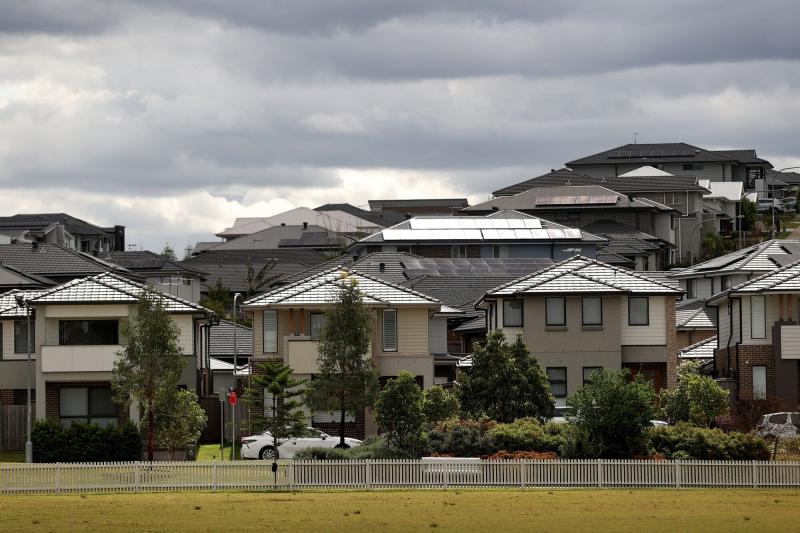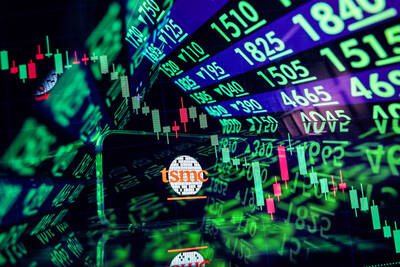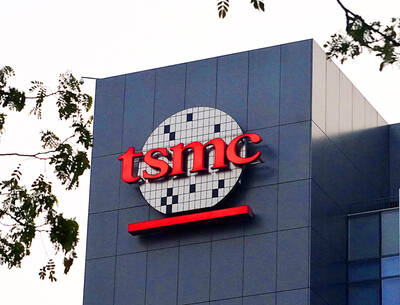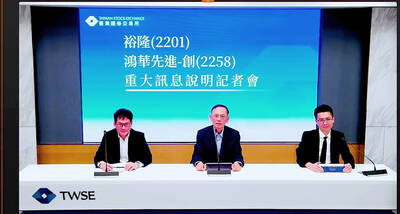Australian house prices declined for the first time in 22 months last month as buyers increasingly found themselves priced out of the market, while the supply of properties increased.
The Home Value Index for major cities slid 0.2 percent for its first fall since February 2023, property consultancy CoreLogic Inc said yesterday. Melbourne and Sydney, the two biggest markets, led the declines with drops of 0.7 percent and 0.6 percent respectively.
On the other side of the country, Western Australia’s state capital Perth led gains with a 0.7 percent increase, followed by the southern city of Adelaide, up 0.6 percent. Those two cities also recorded the largest annual gains of 19.1 percent and 13.1 percent respectively. Yet even here the pace of appreciation had slowed in recent months.

Photo: Bloomberg
“Growth in housing values has been consistently weakening through the second half of the year, as affordability constraints weighed on buyer demand and advertised supply levels trended higher,” said CoreLogic research director Tim Lawless said.
“With worsening affordability constraints and reduced borrowing capacity, we have seen buyer demand pushed toward lower-priced markets,” he said.
Higher interest rates, a shortage of homes and booming population growth have triggered a housing crisis in parts of Australia. The problem has been particularly acute in Sydney where buyers are being priced out of the market given an average home costs 13 times income.
Yet costs have now reached such a level that, combined with interest rates at a 13-year high of 4.35 percent, buyers are simply unable to raise the funds required to purchase a home. As a result, rents have also soared, though that market also ended the year on a softer note, CoreLogic said, citing a rise in the size of households in major cities and a cooling in migration.
“The final months of 2024 have set the framework for a soft start to 2025,” CoreLogic said. “However, as with 2024, we could likely see another year of multi-speed conditions, with the potential for a modest rebound in value growth once interest rates start coming down.”

Taiwan Semiconductor Manufacturing Co (TSMC, 台積電) last week recorded an increase in the number of shareholders to the highest in almost eight months, despite its share price falling 3.38 percent from the previous week, Taiwan Stock Exchange data released on Saturday showed. As of Friday, TSMC had 1.88 million shareholders, the most since the week of April 25 and an increase of 31,870 from the previous week, the data showed. The number of shareholders jumped despite a drop of NT$50 (US$1.59), or 3.38 percent, in TSMC’s share price from a week earlier to NT$1,430, as investors took profits from their earlier gains

In a high-security Shenzhen laboratory, Chinese scientists have built what Washington has spent years trying to prevent: a prototype of a machine capable of producing the cutting-edge semiconductor chips that power artificial intelligence (AI), smartphones and weapons central to Western military dominance, Reuters has learned. Completed early this year and undergoing testing, the prototype fills nearly an entire factory floor. It was built by a team of former engineers from Dutch semiconductor giant ASML who reverse-engineered the company’s extreme ultraviolet lithography (EUV) machines, according to two people with knowledge of the project. EUV machines sit at the heart of a technological Cold

Taiwan’s long-term economic competitiveness will hinge not only on national champions like Taiwan Semiconductor Manufacturing Co. (TSMC, 台積電) but also on the widespread adoption of artificial intelligence (AI) and other emerging technologies, a US-based scholar has said. At a lecture in Taipei on Tuesday, Jeffrey Ding, assistant professor of political science at the George Washington University and author of "Technology and the Rise of Great Powers," argued that historical experience shows that general-purpose technologies (GPTs) — such as electricity, computers and now AI — shape long-term economic advantages through their diffusion across the broader economy. "What really matters is not who pioneers

TAIWAN VALUE CHAIN: Foxtron is to fully own Luxgen following the transaction and it plans to launch a new electric model, the Foxtron Bria, in Taiwan next year Yulon Motor Co (裕隆汽車) yesterday said that its board of directors approved the disposal of its electric vehicle (EV) unit, Luxgen Motor Co (納智捷汽車), to Foxtron Vehicle Technologies Co (鴻華先進) for NT$787.6 million (US$24.98 million). Foxtron, a half-half joint venture between Yulon affiliate Hua-Chuang Automobile Information Technical Center Co (華創車電) and Hon Hai Precision Industry Co (鴻海精密), expects to wrap up the deal in the first quarter of next year. Foxtron would fully own Luxgen following the transaction, including five car distributing companies, outlets and all employees. The deal is subject to the approval of the Fair Trade Commission, Foxtron said. “Foxtron will be